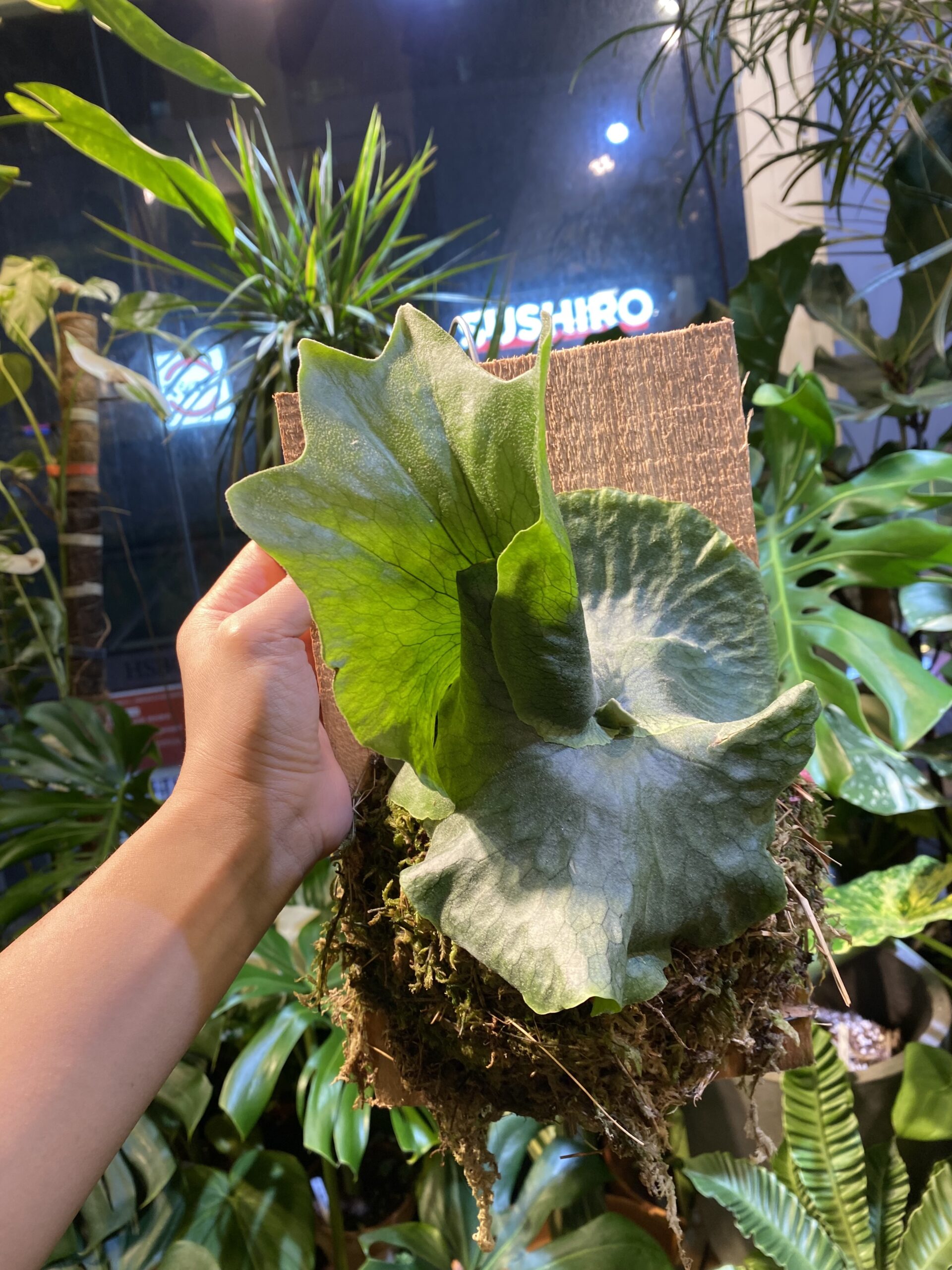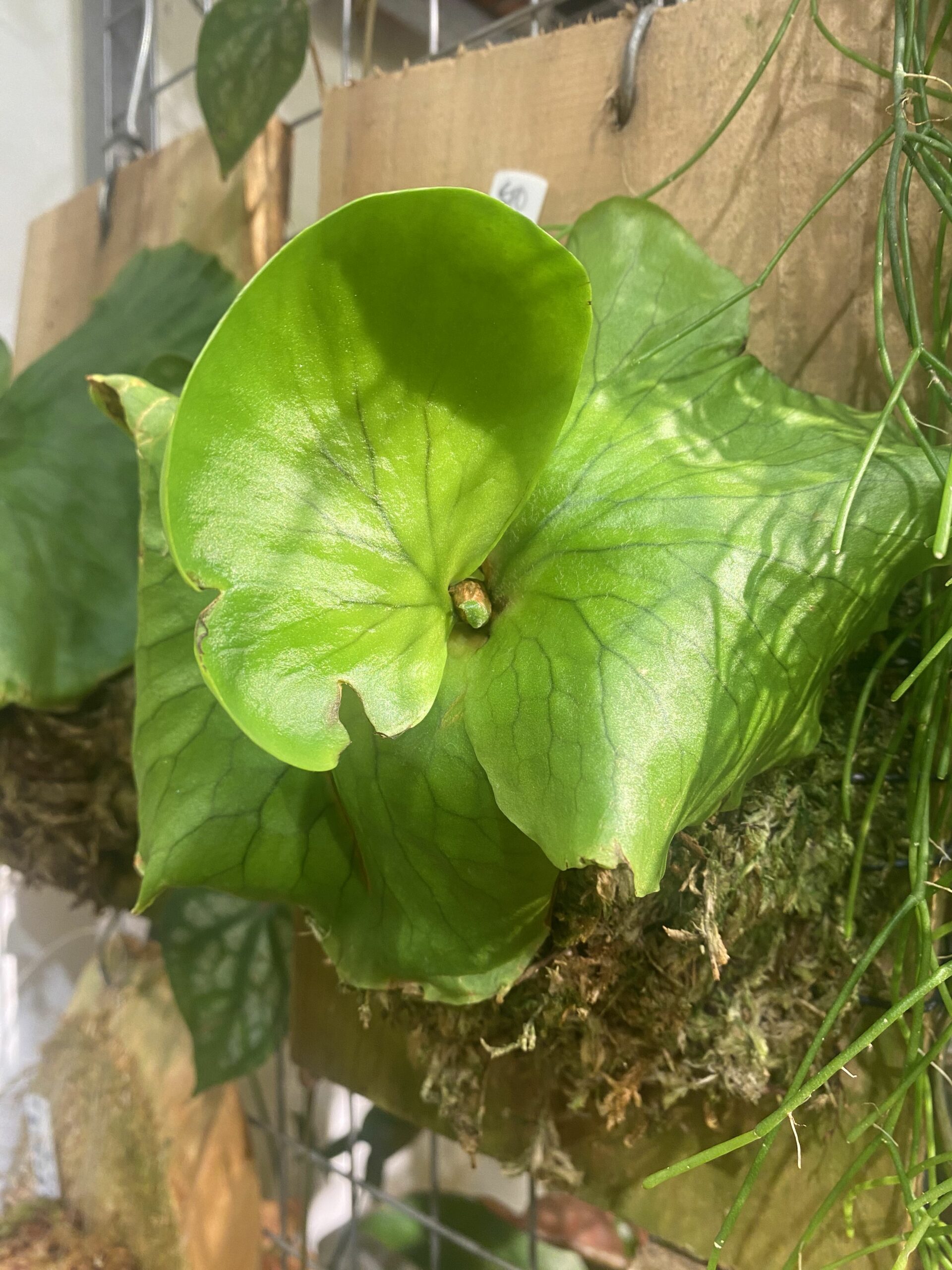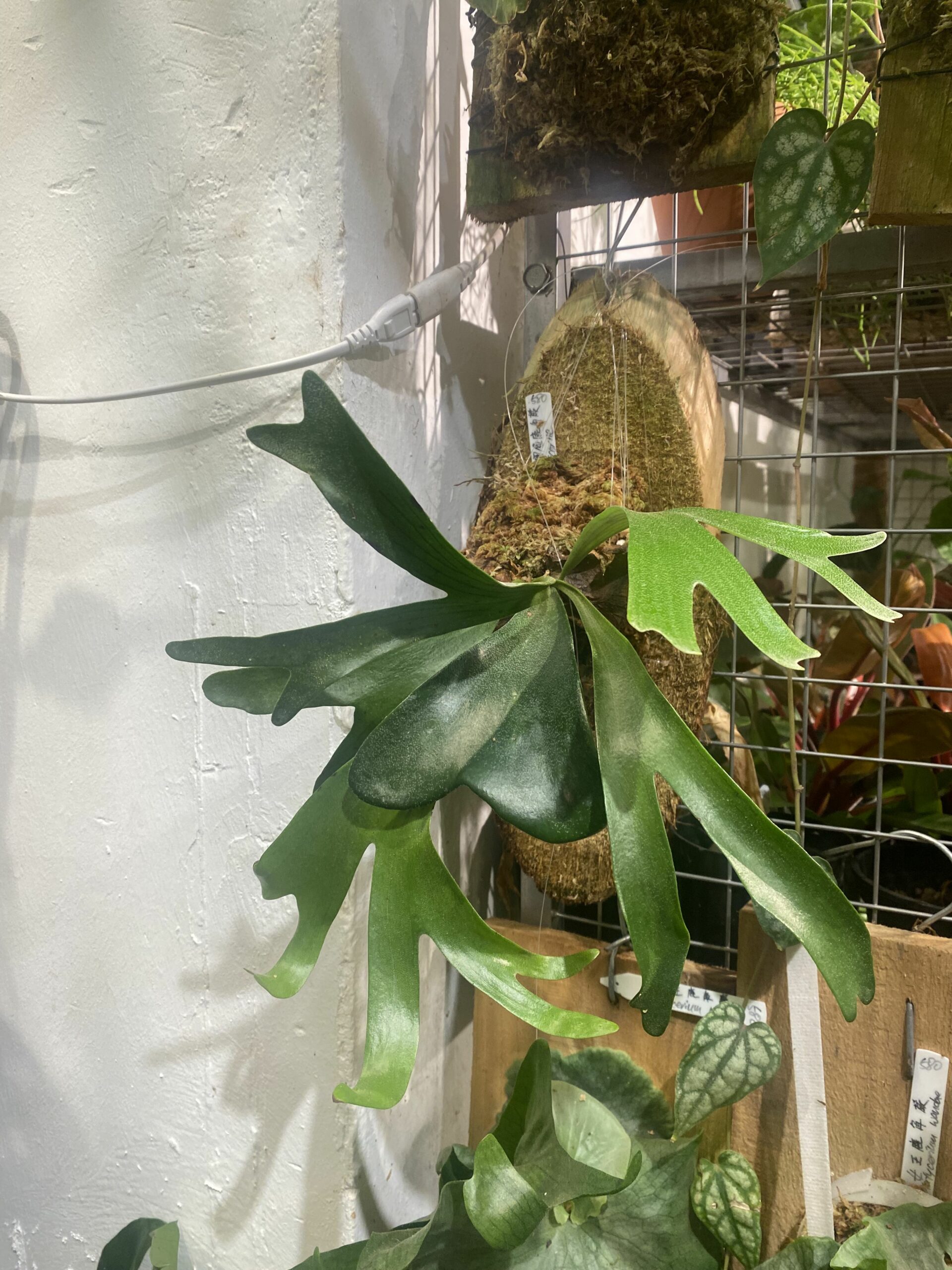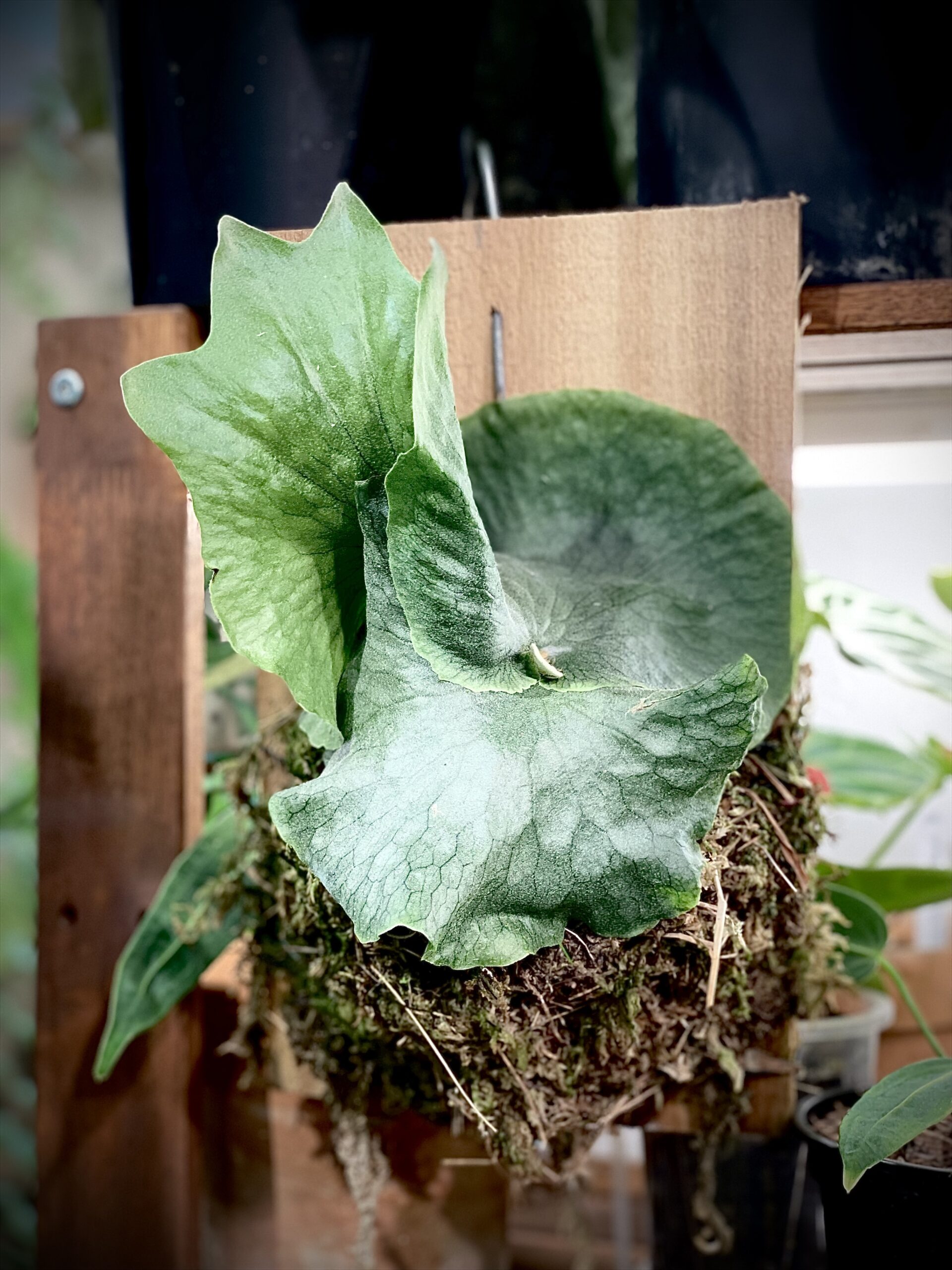Platycerium Staghorn fern
There are about 18 native species of the staghorn fern, mainly native to Africa, Australia, and Southeast Asia. Their leaf shape is said to resemble the forked antlers of a stag or elk.
They are epiphytes in their natural environment and usually grow on tree trunks or rocks. When cultivated indoors, baskets or wooden planks can be used to simulate their natural growing environment.
Staghorn ferns are popular indoor ornamental plants because of their unique appearance and growth Xi. They need bright but indirect light and maintain a moderately humid environment. They are well adapted to high humidity and warm climates, so additional care measures may be required in dry environments, such as regular spraying of water mist or placement on wet trays.
How to care for a staghorn fern
When caring for the staghorn fern, please note the following:
- Light: The staghorn fern prefers to stay in a well-lit but sheltered area. Still, they can withstand more sunlight if they are provided with enough moisture, warmth, and humidity. But be careful, avoid direct sunlight on the delicate leaves, as they can be easily burned.
- Moisture: Proper watering is critical to the success of the staghorn fern. They need to be watered frequently, but the soil surface should be dry between waterings, about once a week in summer or warm climates, and every two to three weeks in cold seasons or cooler weather. An easy way to water is to remove the antler fern and its holder from the wall (or hanging position) and soak it in a water-filled tank for 10 to 20 minutes, or until the roots are completely saturated. Then allow to drip dry before re-hanging.
- Temperature and humidity: The staghorn fern prefers a high humidity environment. While mature staghorn ferns can temporarily tolerate below 0 degrees, they grow better in warm, moist conditions. Especially in early childhood, care needs to be taken to maintain these conditions (at least above 10 degrees Celsius and below 38 degrees Celsius).
- To increase the humidity around the plant, the staghorn fern can be placed in a place in the home where the natural humidity is high, such as the bathroom or kitchen. If that doesn't work, you can use a small humidifier or regular sprays of water to increase the humidity around the plant.
- Fertilizer: To promote the growth of the staghorn fern, you can use a balanced water-soluble fertilizer every month, preferably in spring and summer, when the plant is active. Autumn and winter fertilization can be reduced by fertilizing every other month. The amount of fertilizer can be applied according to the instructions on the product label.
- Reproduction: Staghorn ferns can reproduce by spores or ramets. The spores can germinate in a warm, humid environment and then grow in a container containing fern media. Dividing mature plants into parts, each of which should have enough roots and leaves, is replanted with them.
- Pruning: Regular pruning of the staghorn fern helps keep it neat and healthy in appearance. You can prune any brown or dead leaves, as well as leaves that are too long or messy. Use clean, sharp scissors for trimming and thoroughly clean the tools before each trim to prevent germ infections.
Here are some common staghorn fern problems and solutions:
- Yellowing of leaves: This may be due to too much humidity or too dryness. Adjust the frequency of watering to make sure the soil stays moist but not too wet.
- Leaf wilting or dryness: This can be due to insufficient moisture or low humidity. Increase the frequency of watering and increase the humidity nearby.
- Black or brown spots on the leaves: This may be due to burns or bacterial infections. Avoid direct sunlight on plants and make sure the environment is well ventilated.
- Slow growth: If the growth rate of the staghorn fern slows down, it may be due to a nutritional deficiency. Try increasing the frequency of fertilization or switching to a more nutrient-rich medium.





